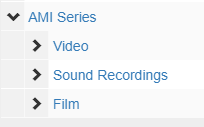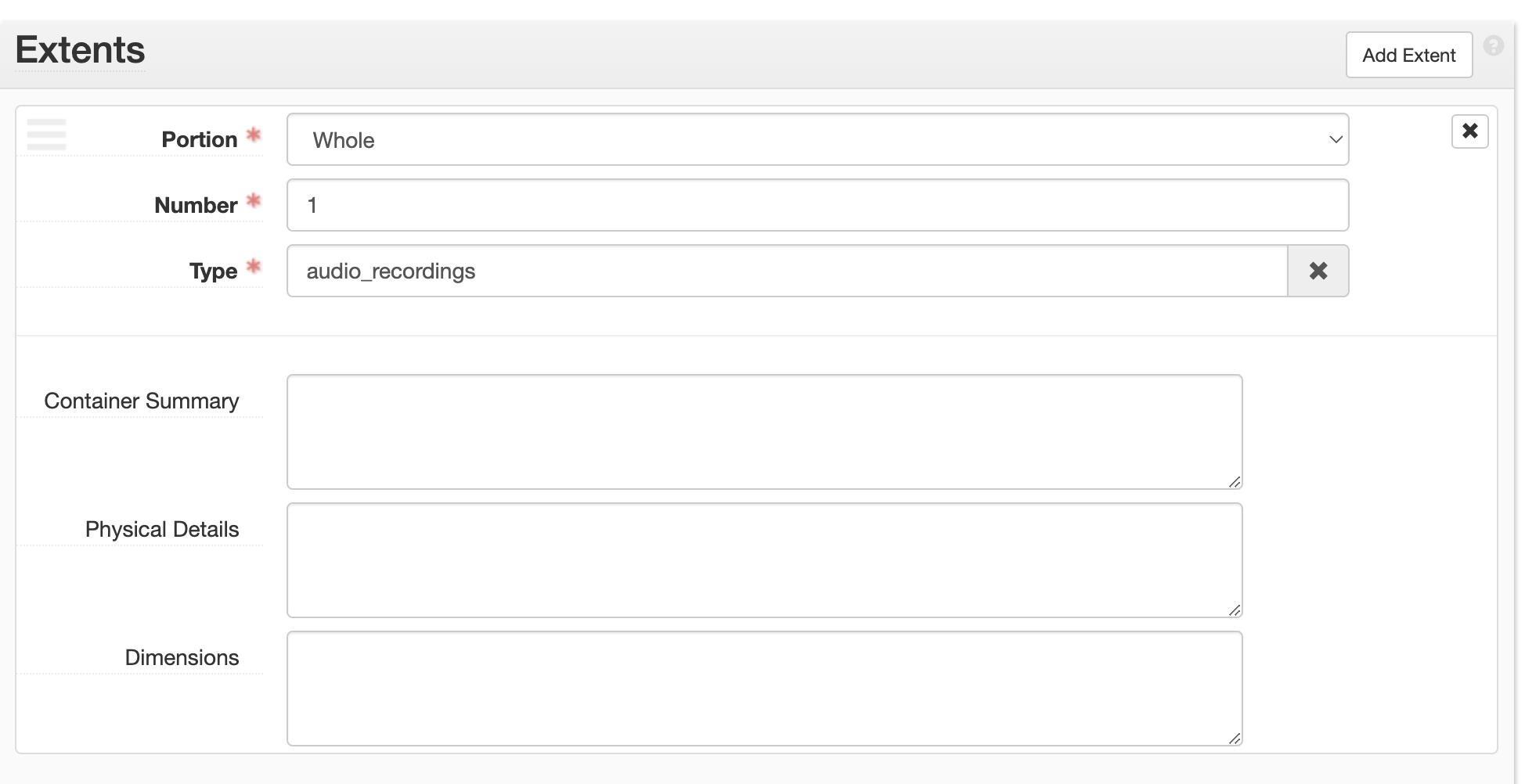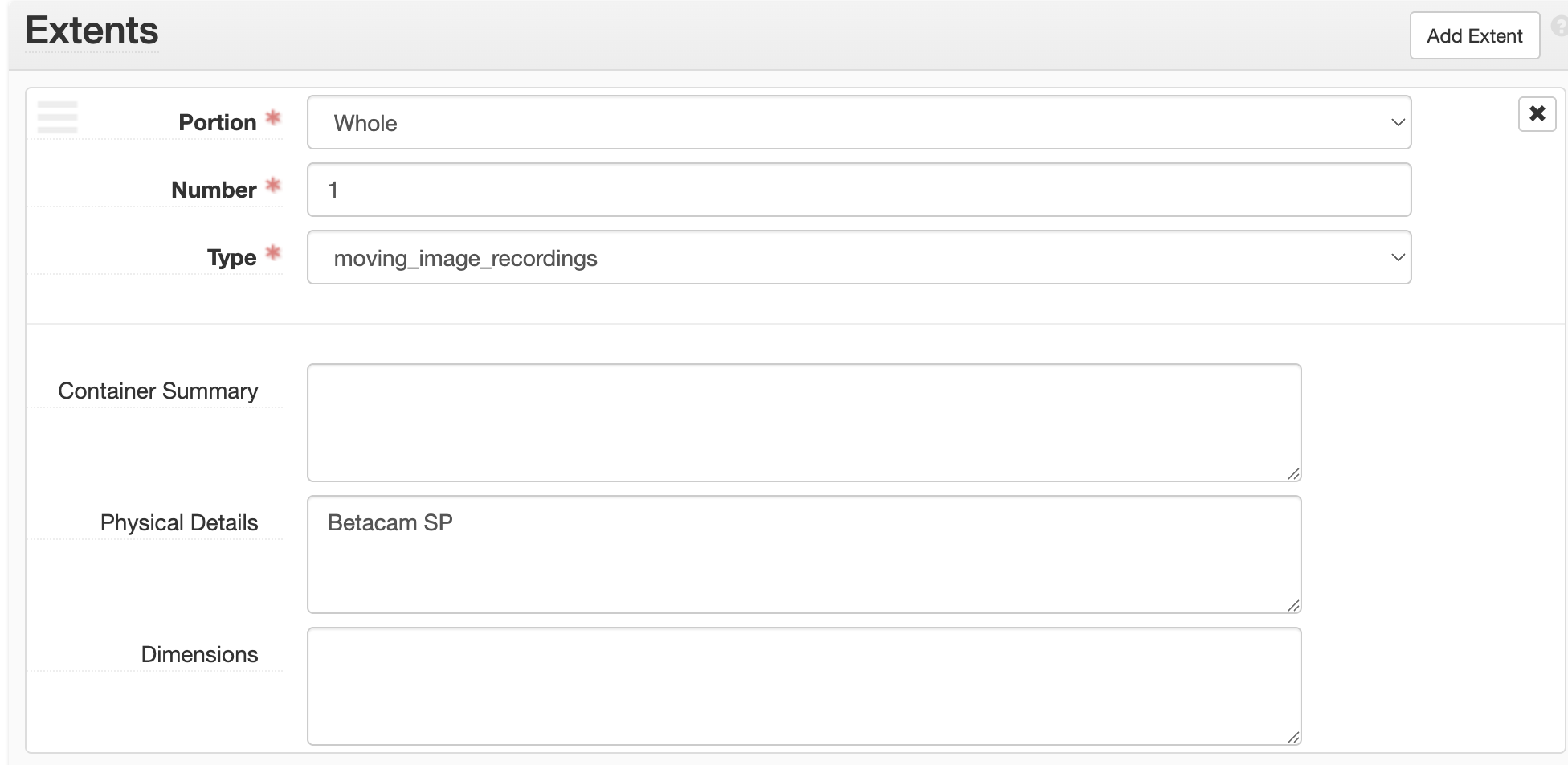Description of Audio and Moving Image Material in ASpace
After you import your audio and moving image inventory into ASpace, it will appear as a single series called AMI Series. The items will be further arranged into the group names you assigned under the larger groupings of Sound Recordings, Videos, and Film.

These are just placeholder series and subseries that you should re-arrange in a manner that reflects the arrangement in the rest of the collection. It is important to also note that the Archival Processing unit does not use the item level of description in ArchivesSpace. Individual audio and moving image items should always receive the file level of description.

Make a component title in the appropriate place(s) in the finding aid for all of the groups of audio and moving image content that will be digitized. The component titles should be as specific as possible and focus on the content, not the specific formats of the audio and moving image materials. For instance, if a group of sound recordings are all interviews, the component should be called interviews not sound recordings. Also, if there are many interviews present, which were recorded as video and audio recordings, these can be combined into a single heading called Interviews. Just because media are in different formats does not mean they need to be described separately as audio recordings and video recordings. The extent statement for each AMI object will identify it as audio or video.
Descriptions of amounts and types of media (e.g., video, sound recordings) should be as accurate and specific as possible. When describing audio and moving image content, be sure to discuss the content, not the format. For instance, say “the series includes fifteen interviews with people, such as John and Jane Doe, conducted as research for his book” as opposed to “this series includes audio cassettes of interviews.”
Table of Contents
- Suppressing AMI in Finding Aids
- AMI Component Extent Statements
- Audio and Moving Image Access Notes In ArchivesSpace
Suppressing AMI in Finding Aids
The Dance division suppresses AMI content until it is digitized. When supressing AMI in ArchivesSpace, suppress the children components, but not the parent component. The series title and series-level description will be viewable in the finding aid, but not the individual audio and moving image components. This is applicable on the subseries level as well. For more information on how to suppress audio and moving image components in a finding aid, see the ASpace User Guide. The ASpace User Guide also includes instructions on how to format tracklists into ordered lists in the Scope and Content note, as well as some guidance on when and when not to condense components.
AMI Component Extent Statements
Just like electronic records, each AMI component should have an extent statement. The extent statement should state the number of recordings and whether the recording audio or moving image. In ArchivesSpace, the extent field will look like this:

If the division requests to include the original media format, use the controlled SPEC term in the Physical Details field of the ASpace extent form as illustrated below.

Audio and Moving Image Access Notes In ArchivesSpace
In both the front matter and at the level immediately above the audio and moving image components, provide the division’s Conditions Governing Access Note.
| Division | Conditions Governing Access Statement |
|---|---|
| MSS | Contact the Manuscripts and Archives division (manuscripts@nypl.org) with questions regarding access to audio and moving image materials. |
| BRG | Inquiries regarding audio and moving image materials in the collection may be directed to the Henry W. and Albert A. Berg Collection of English and American Literature (berg@nypl.org). Audio and moving image materials may be subject to preservation evaluation and migration prior to access. |
| DAN | Inquiries regarding audio and moving image materials in the collection may be directed to the Jerome Robbins Dance Division (dance@nypl.org). Audio and moving image materials will be subject to preservation assessment and migration prior to access |
| MUS | Inquiries regarding audio and video materials in the collection may be directed to the Rodgers and Hammerstein Archives of Recorded Sound (recordedsound@nypl.org). Audio and video materials will be subject to preservation evaluation and migration prior to access. |
| THE | Inquiries regarding audio and moving image materials in the collection may be directed to the Billy Rose Theatre Division (theatre@nypl.org). Audio and moving image materials may be subject to preservation evaluation and migration prior to access. |